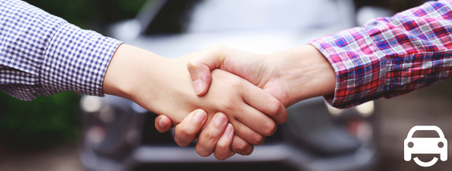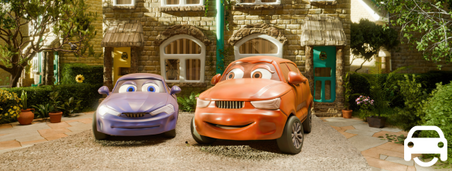Driving in Europe
 Driving in Europe
Driving in EuropeMost of us enjoy having a getaway somewhere in Europe, but if you're choosing to drive on your next trip, there's a few things you need to consider before you travel.
Driving in Europe: Preparing Your Car
Before travel you need to make sure your vehicle is fit for the job. To prevent any unwanted breakdowns on your trip it's useful to get your car serviced or get yourself booked in for a MotorEasy health check!
Driving in Europe: Car Documents
When driving in Europe it's important that you're carrying the correct documents in case you are requested to present them. You will need to carry at least a photocopy of the below with you:
Full, valid driving licence and national insurance number
Vehicle's registration document V5C
Car insurance documents
European Breakdown cover - get a quote from MotorEasy today!
Driving in Europe: Headlamps
In European countries it is a legal requirement that you will not dazzle any oncoming drivers, so ensure that you have adjusted your headlights so they are ready for right-hand driving. You can purchase headlamp converters which dip you headlights in the right direction here.
Driving in Europe: Tool kit
You never know when you're going to experience an issue whilst on a long trip so it's a good idea to carry around a tool kit which holds the essentials. This can consist of spare bulbs, heavy duty tape and puncture aerosol at the very least.
Driving in Europe: GB Sticker
Legally, if driving in Europe, you must display a GB sticker unless your registration plate includes the GB Euro symbol. You can purchase one as part of a European driving kit through the MotorEasy shop.
Driving in Europe: Essentials for Individual Countries
The requirements for individual countries can be slightly different so it's best to do some research and be aware of the equipment you should be carrying. France requires slightly more than other countries such as a breathalyser, reflective jacket and warning triangle. To see what you'll need to carry in each country, see our handy tool.
Check out the MotorEasy shop for all your European driving kits needs.
Driving in Europe: Insurance
Make sure you have travel insurance and a European Health Insurance Card (which you can get for free). This will helps things run much more smoothyl should you require any emergency care on your trip.
Driving in Europe: Directions
Before you travel, ensure that your satnav is updated so you're able to navigate the roads with as little hassle as possible. But in case that fails, always carry a trusty paper map.
If you're travelling with children, it can be difficult to keep them entertained throughout long journeys. Take a look at our tips for travelling long distances with children.
Driving in Europe: Driving Tips
Kiss the Kerb when driving abroad, always kiss the kerb. No really, when you are in a right hand drive car, and you are driving on the right hand side of the road, the kerb is, should you feel the urge, conveniently closer for you to kiss. If it isn’t then you are about to have a head on collision. Staying on the right side of the road is just one thing you have to remember when driving abroad.
If you're planning on hiring a car for your journey, ensure you are usuing one that's safe, good value for money and adequately insured. Do you research prior to travel, checking a range of providers, making sure you're paying close attention to the reviews.
Driving in Europe: Drive & Survive
1. Roundabouts. Take it slow and easy. Don’t be intimidated. Plan ahead and identify your exit point well in time.
2. Major Junctions. Take extreme care when turning left at T junctions and plan your eventual position once you have joined the flow of traffic. In France and Germany it is common practice to have a filter lane on the left to facilitate the crossing of a dual carriage way - there is often little warning of this and most tourists will be driving well to the right, so plan for this.
3. Be Aware. You’ve been driving for a couple of hours and are nicely settled in. You stop for a break. When you resume the journey you find that your concentration has lapsed and their is a risk you could start driving on the left again.
Driving in Europe: Useful numbers
Call 112 to contact the emergency services in any EU country. Make a note of your emergency breakdown service number. If you are a motoreasy warranty customer, familiarise yourself with the overseas repairs process.
Plan A (page 12)
Plan B (page 15)
Plan C (page 13)
If you don't have motoreasy's warranty protection remember, it covers you against repair costs for up to 60 day in Europe.







